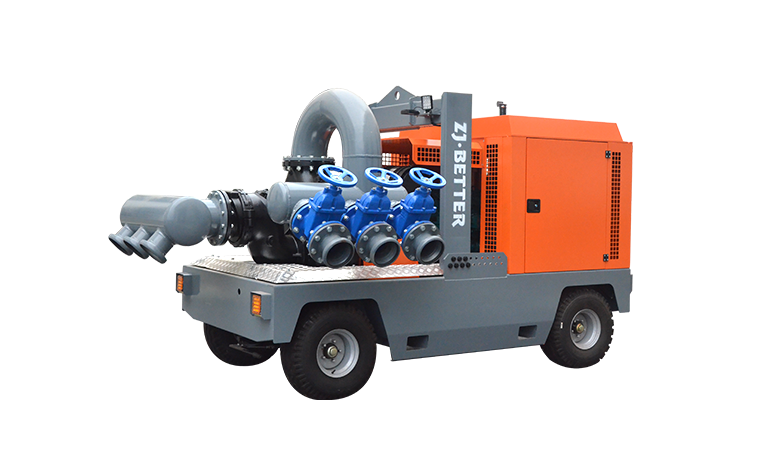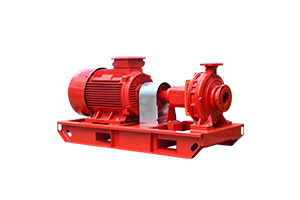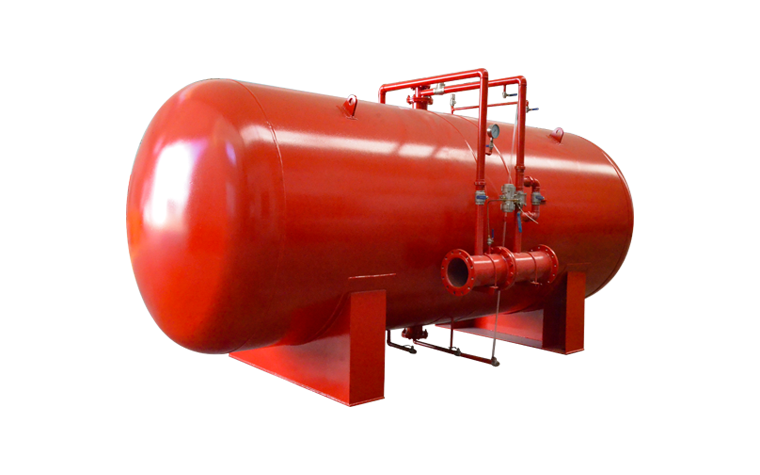-
 Sep 22, 2023Working principle of fire pump ball valveA fire pump ball valve is a type of directional control valve used in fire suppression systems to control the flow of water or firefighting foam. It operates based on a simple yet effective principle involving the movement of a ball inside the valve body. Here's an overview of the working principle of a fire pump ball valve:View details
Sep 22, 2023Working principle of fire pump ball valveA fire pump ball valve is a type of directional control valve used in fire suppression systems to control the flow of water or firefighting foam. It operates based on a simple yet effective principle involving the movement of a ball inside the valve body. Here's an overview of the working principle of a fire pump ball valve:View details -
 Sep 22, 2023Working principle of fire pump directional control valveA directional control valve in a fire pump system plays a critical role in controlling the flow of water or firefighting foam to various parts of the fire suppression system. These valves are used to direct water or foam to specific locations, such as fire hoses, sprinkler systems, or other firefighting equipment. Here's an overview of the working principle of a directional control valve in a fire pump system:View details
Sep 22, 2023Working principle of fire pump directional control valveA directional control valve in a fire pump system plays a critical role in controlling the flow of water or firefighting foam to various parts of the fire suppression system. These valves are used to direct water or foam to specific locations, such as fire hoses, sprinkler systems, or other firefighting equipment. Here's an overview of the working principle of a directional control valve in a fire pump system:View details -
.jpg) Sep 21, 2023Diesel engine fire pump cleaning methodCleaning and maintaining a diesel engine fire pump is essential to ensure its reliability in emergency situations. Here are some steps and methods for cleaning a diesel engine fire pump:
Sep 21, 2023Diesel engine fire pump cleaning methodCleaning and maintaining a diesel engine fire pump is essential to ensure its reliability in emergency situations. Here are some steps and methods for cleaning a diesel engine fire pump:
Safety Precautions: Before starting any maintenance work, ensure the diesel engine fire pump is turned off, and the electrical system is disconnected. Also, follow all safety guidelines and wear appropriate personal protective equipment.
Exterior Cleaning:
Wipe down the exterior of the diesel engine to remove dust, dirt, and grease using a clean cloth or rag.
Use a mild detergent or degreaser diluted with water to clean stubborn stains or heavy dirt buildup. Rinse thoroughly with clean water.
Cooling System Cleaning:
Inspect the cooling system for debris and dirt that may clog the radiator or cooling fins.
Use compressed air or a soft brush to remove debris from the radiator and cooling fins.
Check the coolant level and top up if necessary with the recommended coolant mixture.
Air Filter Cleaning:
Check the air filter for dirt and debris. If it's dirty, remove it.
Tap the air filter gently to dislodge loose dirt and debris.
If it's heavily clogged, consider replacing the air filter with a new one.
Fuel System Cleaning:
Regularly drain the water and sediment from the fuel filter/water separator to prevent contamination.
Check the fuel tank for debris or water. If any is present, it may be necessary to drain and clean the fuel tank.
Oil and Lubrication:
Check the oil level and condition. If the oil is dirty or below the recommended level, change the oil and replace the oil filter.
Lubricate moving parts and joints as specified in the maintenance manual.
Exhaust System:
Inspect the exhaust system for any blockages or damage.
Remove any soot or carbon buildup in the exhaust system to maintain proper exhaust flow.
Electrical System:
Inspect wiring and connections for signs of wear, corrosion, or damage. Repair or replace any damaged components.
Ensure all electrical connections are secure.
Testing and Inspection:
After cleaning, conduct a test run of the diesel engine fire pump to ensure it starts, runs, and operates as expected.
Monitor for any unusual sounds or signs of problems during the test run.
Documentation: Maintain detailed records of cleaning, maintenance, and inspections. Note any issues found and actions taken for future reference.
It's important to follow the manufacturer's maintenance schedule and recommendations provided in the user manual for your specific diesel engine fire pump. Regular cleaning and maintenance will help ensure the pump operates reliably when needed during a fire emergency. If you're not familiar with diesel engine maintenance, it's advisable to consult a professional technician or service provider.View details -
 Sep 21, 2023The specific working principle of diesel engine fire pumpA diesel engine fire pump is a critical component of a fire protection system, and its specific working principle is essential for ensuring reliable fire suppression in emergency situations. Here is an overview of the working principle of a diesel engine fire pump:
Sep 21, 2023The specific working principle of diesel engine fire pumpA diesel engine fire pump is a critical component of a fire protection system, and its specific working principle is essential for ensuring reliable fire suppression in emergency situations. Here is an overview of the working principle of a diesel engine fire pump:
Diesel Engine: The core of the fire pump is a diesel engine, which provides the power required to operate the pump. Diesel engines are chosen for their robustness and reliability, as they can start quickly and operate under various conditions.
Suction and Discharge Ports: The fire pump is connected to a water source through a suction pipe and to the fire suppression system through a discharge pipe. The suction side is where water is drawn into the pump, and the discharge side is where it is expelled at high pressure.
Impeller: Inside the pump housing, there is an impeller. The impeller is a rotating component with vanes or blades. When the diesel engine starts, it rotates the impeller.
Centrifugal Force: As the impeller spins, it imparts centrifugal force to the water inside the pump casing. This force creates a low-pressure zone at the center of the impeller, causing water to be drawn into the pump from the suction source.
Pressure Increase: As the water is drawn in by the impeller, it is accelerated radially outward due to centrifugal force, resulting in a rapid increase in pressure. This high-pressure water is then discharged into the fire suppression system through the discharge pipe.
Pressure Control: To ensure a steady and controlled flow of water, diesel engine fire pumps often have mechanisms to control the pressure. Pressure relief valves or governors can be used to maintain a consistent discharge pressure.
Engine Speed Control: The diesel engine's speed is controlled to match the required flow rate and pressure. Modern fire pumps often have electronic control systems that adjust the engine speed automatically to meet the demand.
Backup Power: In case of a power outage, which can happen during a fire, diesel engines are preferred because they can continue to operate independently of the electrical grid.
Regular Testing and Maintenance: Diesel engine fire pumps are critical safety equipment, and they require regular testing and maintenance to ensure they are in proper working order when needed. Routine inspections, fuel management, and performance testing are part of this maintenance.
The specific working principle of a diesel engine fire pump revolves around the conversion of mechanical energy from the diesel engine into hydraulic energy in the form of pressurized water. This high-pressure water is then ready to be used by the fire suppression system to fight fires effectively.
View details -
 Sep 20, 2023How to solve the problem of poor water pumping in fire pumps?Ensuring reliable and efficient water pumping in fire pumps is crucial for fire safety. If you're experiencing problems with poor water pumping in a fire pump, it's essential to address these issues promptly. Here are steps to help solve the problem:View details
Sep 20, 2023How to solve the problem of poor water pumping in fire pumps?Ensuring reliable and efficient water pumping in fire pumps is crucial for fire safety. If you're experiencing problems with poor water pumping in a fire pump, it's essential to address these issues promptly. Here are steps to help solve the problem:View details -
 Sep 20, 2023How to solve the problem of poor water pumping in fire pumps?Ensuring reliable and efficient water pumping in fire pumps is crucial for fire safety. If you're experiencing problems with poor water pumping in a fire pump, it's essential to address these issues promptly. Here are steps to help solve the problem:View details
Sep 20, 2023How to solve the problem of poor water pumping in fire pumps?Ensuring reliable and efficient water pumping in fire pumps is crucial for fire safety. If you're experiencing problems with poor water pumping in a fire pump, it's essential to address these issues promptly. Here are steps to help solve the problem:View details

.png)
.png)

.png)


